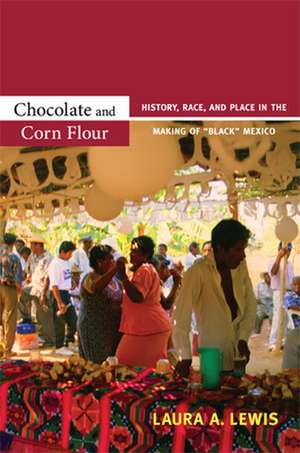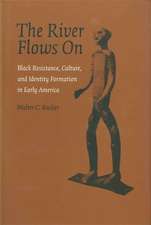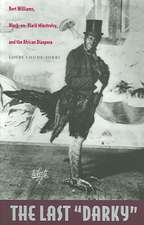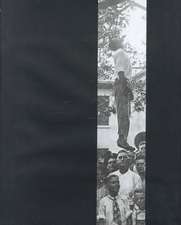Chocolate and Corn Flour – History, Race, and Place in the Making of "Black" Mexico
Autor Laura A. Lewisen Limba Engleză Paperback – 13 mai 2012
Preț: 303.11 lei
Nou
Puncte Express: 455
Preț estimativ în valută:
58.01€ • 60.34$ • 47.89£
58.01€ • 60.34$ • 47.89£
Carte tipărită la comandă
Livrare economică 15-29 aprilie
Preluare comenzi: 021 569.72.76
Specificații
ISBN-13: 9780822351320
ISBN-10: 0822351323
Pagini: 392
Ilustrații: 43 photographs, 2 maps
Dimensiuni: 156 x 233 x 28 mm
Greutate: 0.54 kg
Editura: MD – Duke University Press
ISBN-10: 0822351323
Pagini: 392
Ilustrații: 43 photographs, 2 maps
Dimensiuni: 156 x 233 x 28 mm
Greutate: 0.54 kg
Editura: MD – Duke University Press
Recenzii
The kind of great ethnography much needed in research on Latin American blackness: Laura A. Lewis puts a crimp in recent multiculturalist constructions of Afro-Mexican blacknessbut also in Mexican mestizo nationalismby revealing local meanings attached to being moreno as a complex historical mixture of blackness and indigenousness. Peter Wade, author of Race and Sex in Latin AmericaIn the 1940s, when Mexican anthropologist Gonzalo Aguirre Beltrán first brought Afro-Mexicans into academic and public discussion, African presence in Mexico had been under erasure for so long, that Mexican national identity had elided Africa altogether. Today, Mexicos Third Root has gained national and international recognition. This process has gone hand in glove with a new politics of identity. Laura A. Lewiss ethno-historical study of race probes the local politics of autochtony, nationality and citizenship in the Pacific heartland of Afro-Mexico. Claudio Lomnitz, author of Death and the Idea of Mexico
Notă biografică
Laura A. Lewis is Professor of Anthropology at James Madison University and the author of "Hall of Mirrors: Power, Witchcraft and Caste in Colonial Mexico," also published by Duke University Press.
Cuprins
Acknowledgments ix
Introduction 1
1. The Lay of the Land 15
2. Identity in Discourse: The "Race" Has Been Lost 55
3. Identity in Performance 85
4. Africa in Mexico: An Intellectual History 119
5. Culture Work: So Much Money 155
6. Being from Here 189
7. A Family Divided? Centripetal and Centrifugal Forces 231
8. Transnationalism, Place, and the Mundane 265
Conclusion. What's in a Name? 305
Notes 323
Bibliography 341
Index 363
Introduction 1
1. The Lay of the Land 15
2. Identity in Discourse: The "Race" Has Been Lost 55
3. Identity in Performance 85
4. Africa in Mexico: An Intellectual History 119
5. Culture Work: So Much Money 155
6. Being from Here 189
7. A Family Divided? Centripetal and Centrifugal Forces 231
8. Transnationalism, Place, and the Mundane 265
Conclusion. What's in a Name? 305
Notes 323
Bibliography 341
Index 363
Descriere
Anthropologist Laura Lewis explores the lives and self-understanding of Mexicans of African descent living in the agricultural village of San Nicolas on the Pacific coast of Mexico. In recent years, the area has been described by anthropologists, journalists, and activists as the cradle of Afro-Mexican culture, but residents call themselves Moreno or mixed black-Indians, neither denying their blackness nor identifying as Afro-Mexicans. Lewis argues for attending to local forms of race as she describes the conflicts between outsider investments and those of the residents. The last chapter follows some of the residents who have settled around Winston-Salem, but maintain their ties to the village.














